| Description : | Le Groupe nîmois Phytocontrol, groupe indépendant, spécialiste de la sécurité sanitaire, des aliments et de l’environnement, recrute un (e) ) Ingénieur R&D – Data Scientist pour accélérer sa croissance (poste localisé au siège social à Nîmes).
Le groupe est présent dans 6 pays européens ainsi qu’au Maroc et emploie plus de 400 salariés.
Le Groupe Phytocontrol favorise l’écoute et la participation de ses salariés pour bâtir un environnement de travail convivial et dynamique. La réactivité, l’expertise et la proximité avec les clients et les collaborateurs constituent l’ADN de l’entreprise.
L’ambition du groupe : l’ambition du groupe Phytocontrol est d’assoir sa position de leader européen dans ses domaines d’activités, de poursuivre sa croissance, de continuer à innover et à promouvoir son excellence dans ces domaines.
Les activités du groupe : sécurité sanitaire des aliments, des eaux, des sols, et des produits cosmétiques et pharmaceutiques.
Les chiffres clés du groupe :
Age moyen des salariés : 32 ans
Chiffres d’affaires : + de 35 M€ en 2023
Création du groupe : 2006
Répartition Hommes-Femmes:
Hommes : 41%
Femmes : 59%
Avantages
- Tickets restaurants
- Chèques cadeaux
- 50% Transports
- Mutuelle prise en charge à 100% par l'employeur
- Rémunération sur 13 mois
- Prime d'intéressement
Mission
Les principales missions du Poste
Rattaché(e) au Manager R&D du Groupe, notre futur(e) Ingénieur R&D – Data scientist aura en charge les missions suivantes :
1/Missions R&D - analyses de contaminants
– Développement et validation de méthodes d’analyse dans les produits d’origine animale, produits dérivés et/ou matrices environnementales (par GC-MS/MS, LC-MS/MS, ICP-MS, …etc.) dans le respect des exigences fixées au sein du laboratoire (accréditation 17025, BPL, réglementation EU)
– Etudes bibliographiques, planification et réalisation des essais de développement et de validation.
– Proposition de plans d’action pour la résolution de problématiques analytiques
– Participation à la rédaction des documents techniques (mode opératoire, dossier de validation, etc.)
– Participation à l’optimisation et l’amélioration continue des méthodes existantes.
2/ Missions R&D – authenticité des aliments
- Prise en charges des demandes d’analyse d’authenticité des aliments en proposant des méthodes d’analyses adaptées (LC-qTOF, GC-IRMS, DIMS…etc), analyses et modélisation de données grâce à l’outil développé en interne.
– Interprétation des données clients et élaboration des dossiers de validation analytiques et statistiques adaptées à ses besoins (analyse ciblées et non ciblées) permettant de déterminer les critères d’authenticité attendus par le client (variété, origine, naturalité, composition).
-Elaboration des rapports de validation, communication et vulgarisation de l’information auprès des clients.
- Exploitation en routine des modèles obtenus sur les nouveaux échantillons clients.
Profil
Profil et formation :
De formation Bac+5 en Chimie ou diplômé d’une école d’ingénieur avec un intérêt personnel pour l’informatique et l’analyse de données
– Tu disposes impérativement d’une première expérience en développement de méthodes d’analyse (connaissance du COFRAC appréciée) dans les secteurs Agroalimentaire, Environnement, Cosmétiques, Pharmaceutiques et Biotechnologies.
– Pratique des techniques d’analyses (GC, HPLC, MS/HRMS, ICP-MS, etc.)
- Des bases en statistiques et en R ou en Python
– Réalisation de la maintenance de premier niveau d’équipements de laboratoire
– Connaissance des techniques de préparation des échantillons (extraction, purification…etc)
– Capacité à travailler en équipe
– Dynamisme, autonomie, rigueur, force de proposition
Poste:
Contrat : CDI
Rémunération selon profil et expérience |



















